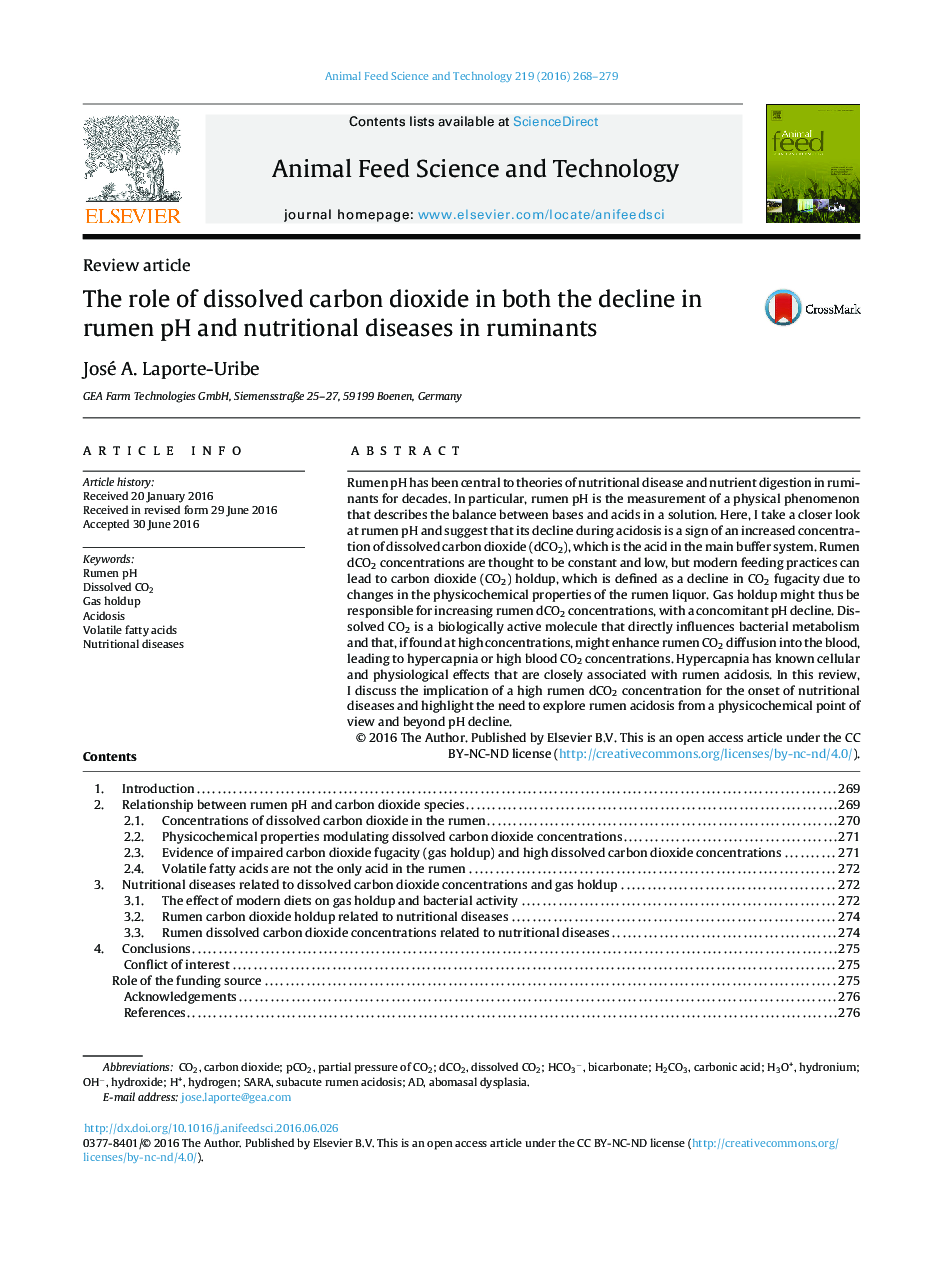| کد مقاله | کد نشریه | سال انتشار | مقاله انگلیسی | نسخه تمام متن |
|---|---|---|---|---|
| 8491143 | 1552366 | 2016 | 12 صفحه PDF | دانلود رایگان |
عنوان انگلیسی مقاله ISI
The role of dissolved carbon dioxide in both the decline in rumen pH and nutritional diseases in ruminants
دانلود مقاله + سفارش ترجمه
دانلود مقاله ISI انگلیسی
رایگان برای ایرانیان
کلمات کلیدی
H3O+DCO2pCO2Dissolved CO2 - CO2 حل شدهHCO3− - HCO3-OH− - OH-rumen pH - pH شکمبهCarbonic acid - اسید کربنیکVolatile fatty acids - اسیدهای چرب فرارAcidosis - اسیدوزSubacute rumen acidosis - اسیدوز شکم زیرخوریBicarbonate - بی کربنات، هیدروژن کربناتCarbon dioxide - دیاکسید کربنSARA - ساراpartial pressure of CO2 - فشار جزئی CO2Gas holdup - نگهدارنده گازHydronium - هیدرومنیومHydrogen - هیدروژن Hydroxide - هیدروکسیدCO2 - کربن دیاکسید
موضوعات مرتبط
علوم زیستی و بیوفناوری
علوم کشاورزی و بیولوژیک
علوم دامی و جانورشناسی
پیش نمایش صفحه اول مقاله

چکیده انگلیسی
Rumen pH has been central to theories of nutritional disease and nutrient digestion in ruminants for decades. In particular, rumen pH is the measurement of a physical phenomenon that describes the balance between bases and acids in a solution. Here, I take a closer look at rumen pH and suggest that its decline during acidosis is a sign of an increased concentration of dissolved carbon dioxide (dCO2), which is the acid in the main buffer system. Rumen dCO2 concentrations are thought to be constant and low, but modern feeding practices can lead to carbon dioxide (CO2) holdup, which is defined as a decline in CO2 fugacity due to changes in the physicochemical properties of the rumen liquor. Gas holdup might thus be responsible for increasing rumen dCO2 concentrations, with a concomitant pH decline. Dissolved CO2 is a biologically active molecule that directly influences bacterial metabolism and that, if found at high concentrations, might enhance rumen CO2 diffusion into the blood, leading to hypercapnia or high blood CO2 concentrations. Hypercapnia has known cellular and physiological effects that are closely associated with rumen acidosis. In this review, I discuss the implication of a high rumen dCO2 concentration for the onset of nutritional diseases and highlight the need to explore rumen acidosis from a physicochemical point of view and beyond pH decline.
ناشر
Database: Elsevier - ScienceDirect (ساینس دایرکت)
Journal: Animal Feed Science and Technology - Volume 219, September 2016, Pages 268-279
Journal: Animal Feed Science and Technology - Volume 219, September 2016, Pages 268-279
نویسندگان
José A. Laporte-Uribe,